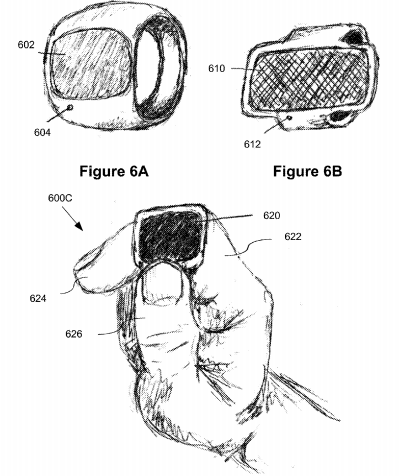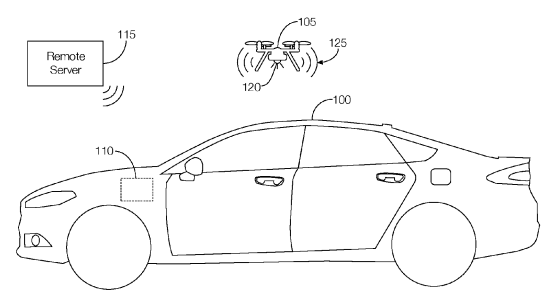Every week, we will be highlighting the top patent, copyright, trademark, intellectual property, etc. stories of the previous week in our “In Case You Missed It” segment. The list itself is in no particular order and includes a wide range of stories from the patent world that are informative, noteworthy, or just plain bizarre. The stories included encompass everything from Supreme Court cases to insights into growing industries. Please feel free to comment your thoughts on the stories or share an important one we missed!
“World Intellectual Property Indicators: Filings for Patents, Trademarks, Industrial Designs Reach Record Heights in 2018”
The World Intellectual Property Organization (WIPO) released their 2019 World Intellectual Property Indicators report last week highlighting the patent, trademark, and industrial design filings and activity of 49 countries in 2018. Some of the major highlights include a growth in global patent filings of 5.2% from 2017 as well as a growth of 15.5% in trademark filings. Additionally, applications for utility models grew 21.8% from the year prior.
As for the countries with the greatest filing activity in 2018, China takes the top spot, filing a record 1.54 million applications and accounting for an impressive 46% of the global total. Meanwhile, the U.S. came in second, accounting for a little over 18% of global totals with 597,141 applications. Japan (313,567), South Korea (209,992), and the E.U. via the European Patent Office (174,397) followed behind.

China patent filings grew 11.6% in 2018, trademarks grew 28.3%, and industrial designs 12.7%. In all, Asian countries accounted for 66.8% of all applications filed. In the U.S., patent filings decreased by 1.6%, the first decline since 2009, however trademark filings rose 4.3%. Half of U.S. applications were from a foreign filers whereas 30% of China’s applications were foreign.That said, it is important to note that these figures are domestic applications filed to national offices, not to the WIPO.
In terms of trademarks, China accounted for nearly 68% of the 10.9 million global filings, while the U.S. came in second with 640,181 applications (5.9%) and Japan with 512,156 (4.7%), respectively. Although these are measured by domestic filings and not entirely true to the number of successful applications, it is hard to ignore China’s growing IP activity and influence in the world. By the report’s methods, China has decimated other nations in terms of patent and trademark filings and appears to not be stopping anytime soon. To read more about this story, click here (via WIPO, October 16th, 2019).
“An Apple Watch for Your Finger? New Patent for Smart Ring Says It’s Possible”
Over the past few months we have covered Apple’s fervid attempts to patent various wearable smart devices and upgrades to existing ones. From the Apple watch biometric scanner scanner that can map your wrist to smart clothing that can take electrocardiogram and blood pressure measurements, Apple has taken initiative in patenting every conceivable, wearable smart device. Which brings us to the company’s latest patent filing, the smart ring (which I am going to bet will be named the “Apple Ring”). Equipped with a touchscreen, computer processor, and wireless transceiver, the “ring computing device” would share many of the same features as the Apple Watch albeit smaller. For example, a microphone inside would enable the user to give voice commands and speaker to hear the response just like with the Apple Watch.

When synced to a user’s phone, the ring could be used to initiate phone calls, read and reply to texts, check email, play music, and communicate biometric data to fitness or health apps on the phone. Some biometric data the ring would measure includes “heart rate, temperature, motion, cardiac rhythm, perspiration, and galvanic skin response.” All in all the device is a lot like the Apple Watch and I am anxious to see what the next wearable smart device looks like. Are smart earrings next? To read more about this story, click here (via TechRadar, October 17th, 2019).
“Ford Patents Drone That Pops Out of a Car’s Trunk”
A new patent from Ford outlines a “vehicle-integrated drone” that would reside in a driver’s trunk and deploy from the vehicle when prompted. The purpose of the drone would be to draw attention to a vehicle in an emergency situation where visibility is low and the vehicle is difficult to find. To get the attention of emergency services and other drivers the drone may “shine a light onto the vehicle, turn on a siren, or provide any other type of perceptible alert.” Additionally, the drone could possibly follow the host vehicle and alert other drivers if the vehicle can still move but there is a non-emergency issue.

The patent also indicates the drone could be equipped with a camera to monitor the vehicle and send footage to emergency services as well as contain GPS to communicate the vehicle’s location. The drone could be a lifesaver for individuals in rural areas or who are in conditions where they may be hard to locate. To read more about this story, click here (via Futurism, October 14th, 2019).
“Update on Patent Subject Matter Eligibility”
Last week the USPTO provided notice of an update to the 2019 Revised Patent Subject Matter Eligibility Guidance (PEG) published back in January. According to the office, the update does not change the PEG but rather serves as a guide for how the office applies it. The update touches on 5 major themes outlined in PEG feedback. These include guidance on “evaluating whether a claim recites a judicial exception,” “the groupings of abstract ideas enumerated in the 2019 PEG,” “evaluating whether a judicial exception is integrated into a practical application,” “the prima facie case and the role of evidence with respect to eligibility rejections,” and “the application of the 2019 PEG in the patent examining corps.” You can read the guidance here. To read more about this story, click here (via USPTO, October 17th, 2019).








